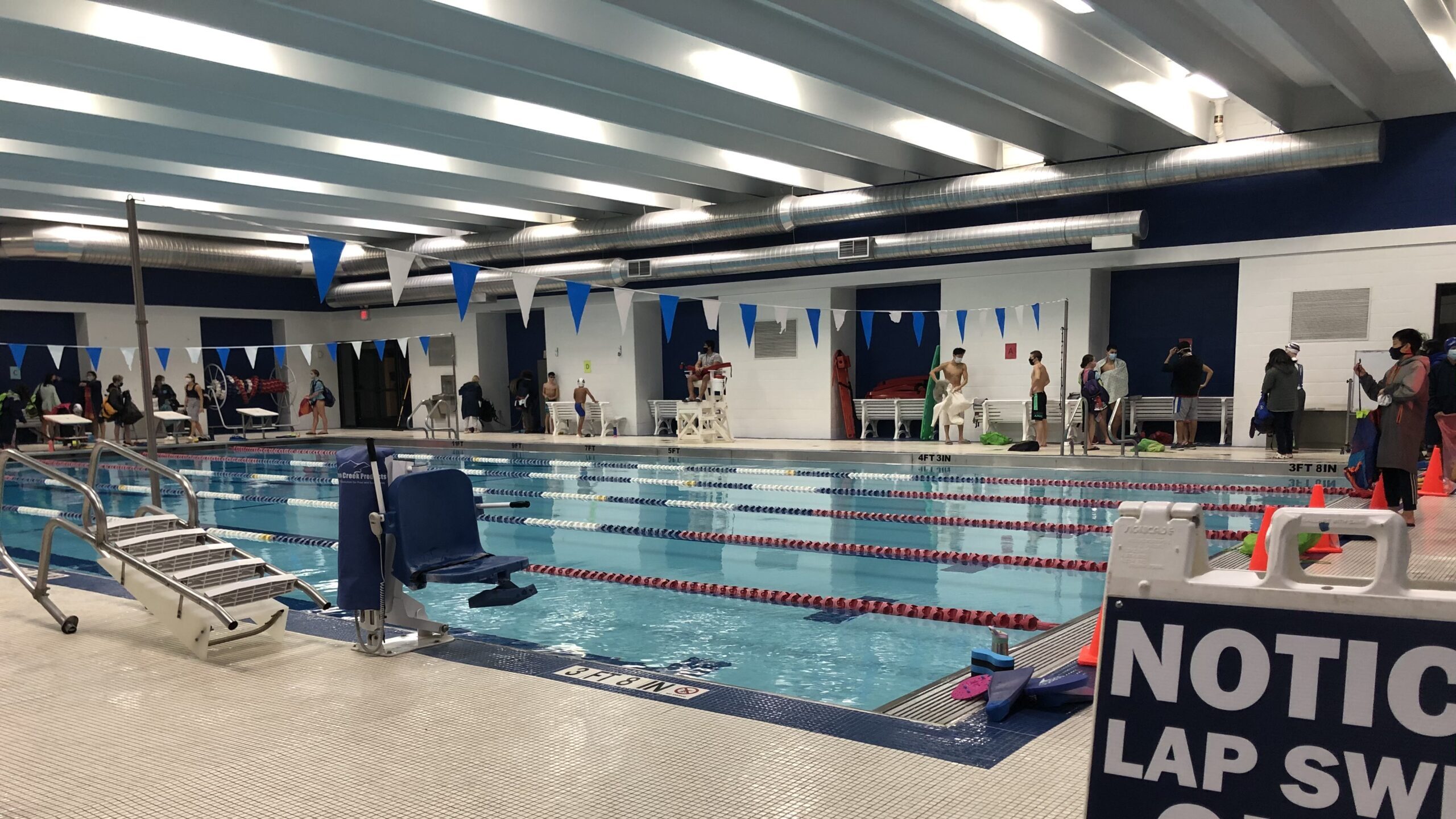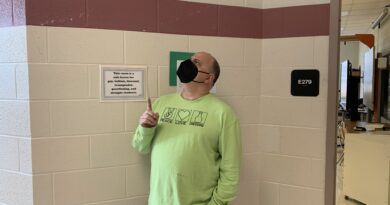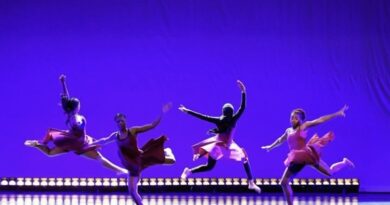How COVID-19 Guidelines Have Affected Montgomery County’s Student Athletes
Montgomery County resumed in-person sports activities when Phase Two took effect June 12. Since then, youth athletes have been required to follow the proper COVID-19 guidelines while practicing, and some kids have had an easier time adjusting than others.
Although it varies from sport to sport, the general requirements for COVID-19-friendly practices are as follows: athletes and coaches are required to socially distance when possible, and masks may only be taken off when engaging in vigorous physical activity.
Each sport is categorized as low, medium, or high risk. Low and medium risk sports, such as cross country and swim, can be adapted to include protective measures limiting close contact. Sports categorized as low and medium risk are permitted to practice relatively normally. High-risk sports on the other hand, such as football and basketball, involve close contact. The Montgomery County Government website states, “Practice that involves skills-building and drills is permitted for high-risk sports.” Tournaments and championships, however, are prohibited, and games are limited to those in the DMV area. Sports equipment and areas where the sport takes place must be thoroughly and routinely disinfected. These guidelines are for club and recreational sports as in-person scholastic sports have been put on hold, but certain private high schools in Montgomery County have been able to resume in-person practices for fall sports.
Adjusting to practicing under COVID-19 guidelines has been easier for some athletes than others, with most saying their sport has become more difficult with masks and social distancing. In addition to modifications to practice and competition, many sports have been regularly testing their athletes’ temperatures and having them sign forms attesting to their health.
“Personally, I think it’s a little bit harder to breathe while you’re wearing the mask and playing,” says Sydney Allen, a sophomore soccer player at Holy Cross High School “You’re also required to do more checks before coming to practice to ensure you’re COVID free,”
Soccer players at Holy Cross have made a few changes to their practice routine. Athletes are required to enter and exit through a designated gate, must fill out a form stating that they do not have COVID-19, and must have their temperatures taken before practice. Practices occur twice a week at Holy Cross, on Tuesdays and Thursdays for two hours. Allen practiced much more frequently before COVID-19 and attending Holy Cross. Competitive soccer practices in general are able to take place more frequently than twice a week.
However, not all sports are as limited when scheduling practices. Rockville Montgomery Swim Center (RMSC) swimmers are able to get into the water six or more times per week. The COVID-19 guidelines for swimming are slightly different from others, as it takes place in the water. Swimmers arrive at the pool with masks on and remain socially distanced inside the building, but are not required to keep the mask on once they are in the water. They are not permitted to enter the locker rooms before or after practices. There are four people allowed per lane, and swimmers must remain socially distanced while in the water. The common concern about wearing masks while exercising isn’t present with swimmers.
“I don’t get to socialize with my friends when practicing, I only get to talk to my peers which is fine,” says freshman RMSC swimmer Amy Qin. “I feel like everything else is pretty normal, just a reduction of capacity in a lane.”
Swimming, although it can be classified as a team sport at times, is very individualistic. Swimmers have not suffered from any communication issues resulting from the COVID-19 guidelines. The same cannot be said about softball players, who need to communicate with each other in order to thrive as a team.
“Practices are different because we can’t get up close next to each other, so [there are] no team cheers or congratulating each other on good plays or hits, which really affects the overall team spirit,” says Sammi Frey, a sophomore softball player at Blair High School. “It’s so important for all of us to be safe during COVID, so I understand why all of the precautions are in place. It’s just harder to bond as a team under times like these, which affects the way we play together.”
Softball players are getting used to the mask-wearing and social distancing, but larger challenges result from the restriction on sharing equipment. It has left some players in difficult situations, as they can’t afford to buy all of the proper equipment. Without borrowing equipment, these players can’t participate in all of the planned drills, which sets them behind the other players. Umpires are very strictly upholding the COVID-19 guidelines, leaving no room for exceptions.
On the other hand, volleyball players are constantly sharing their equipment, coming in contact with the balls each time they practice. Masks are worn throughout the practices, and hand sanitizer is passed around during water breaks. Teams have become smaller because of a 20 player limit in gyms, and volleyballs are wiped down in between sessions.
“Volleyball is already a sport where you are spread out but social distancing is not specifically required,” says Sasha Potapova, a sophomore volleyball player at Blake High School. Volleyball is a team sport that hasn’t been affected by COVID-19 as greatly as softball.
Another sport that doesn’t usually require physical contact, but proves challenging to run virtually, is competitive dance. Dance has been taking place both in-person and over Zoom. Though safer, Zoom rehearsals are difficult for dancers. “Dance is completely different and objectively more difficult [now],” says Norah Lesperance, a sophomore dancer at Einstein High School. “It’s such a visual and hands on sport, and it’s very hard to make progress without a mirror in front of us or a teacher to correct our placement. Zoom delays music, so it’s been impossible to dance in sync or learn choreography quickly.”
Not having access to the studio floors is also making practice more difficult for dancers. Attempting certain turns or sequences is extremely difficult on slippery surfaces or materials like carpet. Additionally, many dancers don’t have enough space in their home in order to complete turns and leaps, which gets in the way of their choreography and how much effort they are able to execute.
The many challenges arising from practicing with COVID-19 guidelines makes athletes wary of the long term consequences of altered practices. Different types of athletes weigh in with a variety of concerns about the future.
“[S]ome swimmers can’t swim as much as they normally could because of the four-person per lane [rule], which can be unfair to them and could affect their performance in the long run at a meet.” says Qin.
“[Dance] has definitely become harder. Myself and some of my friends have considered quitting due to how much strength and technique we have lost.” says Lesperance.
“I think it would be harder to interact with coaches and college [recruiters] because there will be more restrictions,” says Allen.
However, some athletes view practice under covid guidelines as a learning opportunity, and a chance to grow. Potapova comments, “It [will] make us stronger, as I remember when I had my first two-hour practice with a mask I found it really hard to breathe properly, but recently I barely notice the mask at all.”
The actual effects COVID-19 will have on athletes and the continuation of sports in the future is still unknown, which is becoming a stressor for many athletes. A majority of high school athletes plan on participating in their school sport sometime this year, and the lack of information they have is a common concern. Nonetheless, most athletes are as optimistic as they can be, hoping they can return to something closely resembling a normal winter or spring sports season.




